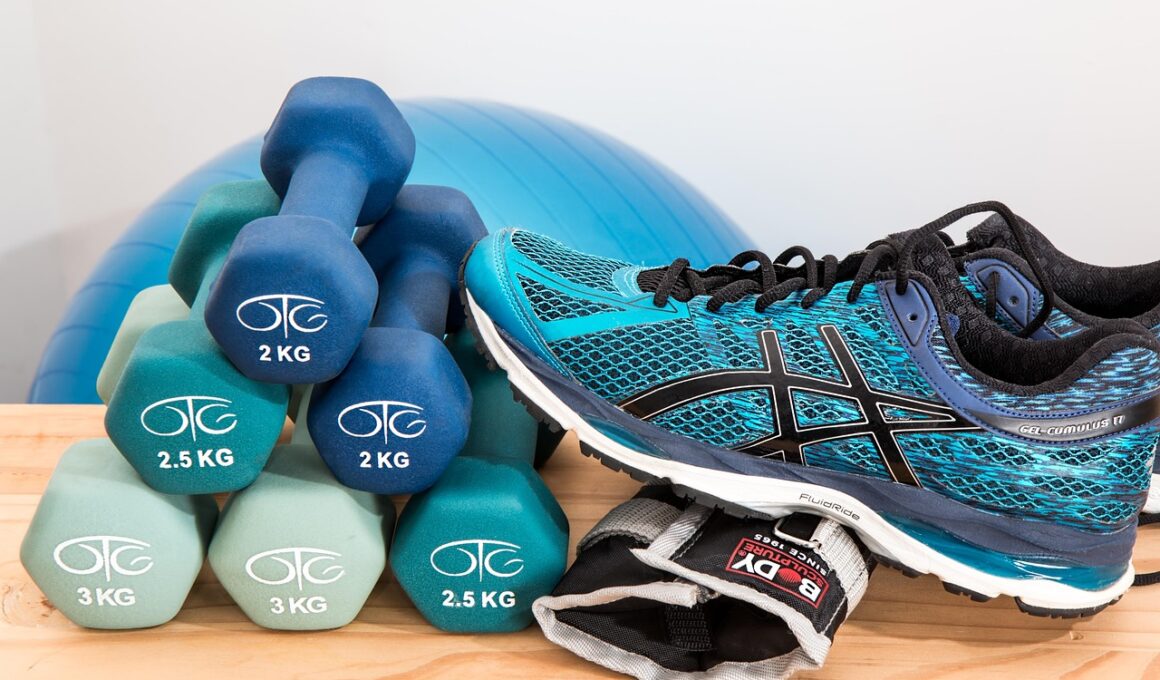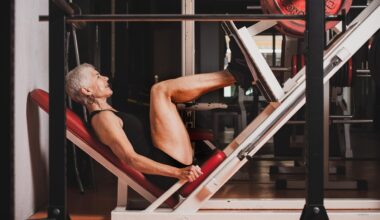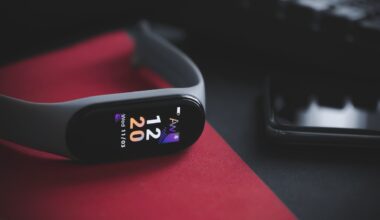Case Study: Using Visual Cues to Build a Successful Exercise Routine
Exercise is vital for maintaining physical health and achieving fitness goals. However, many individuals struggle to develop a consistent exercise routine. This case study examines how visual cues can significantly enhance habit formation, leading to a successful workout regimen. The example involved a group of participants aiming to incorporate exercise into their daily lives. Researchers encouraged them to use visual cues to trigger their workouts, such as placing workout clothes near their bed or a yoga mat in the living room. By making these cues visible, participants became more aware and reminded of their commitment to exercise. This method aimed to reduce decision fatigue by simplifying the process of starting a workout. Every time they walked past the cues, it reinforced their intention to engage in physical activity. Over time, this approach facilitated the creation of a habit that became ingrained in their daily routines. The impact of visual cues on reinforcement illustrated how a simple change in environment could produce significant changes in behavior, ultimately leading to a long-lasting exercise habit.
The participants’ success with visual cues in building their exercise routines showed remarkable results. They found that by implementing visual reminders, they experienced increased motivation and accountability. Furthermore, these adjustments transformed exercise into a near-automatic behavior. Each cue served as a motivational signal nudging them toward action. The power of environmental design is evident in this case study, as participants faced fewer barriers when encouraged by visual prompts. Researchers highlighted that the cues need to be strategically placed in areas where participants frequently spent time, such as their bedrooms or living rooms. Over time, the repeated exposure to these cues, accompanied by the act of exercising, created strong associations in their minds. This repetitive cycle established a neural pathway, making it easier for participants to engage in physical activity without excessive thought or resistance. Additionally, the improvement in their physical health and well-being reinforced the benefits of habitual exercise. This case study demonstrates how simple yet effective techniques like visual cues can lead to achievable and sustainable life changes. Overall, these findings provide valuable insights into habit formation related to exercise.
Implementation of Visual Cues
Implementing visual cues involves understanding an individual’s environment and tailoring the cues to their preferences. Each participant in the study customized their visual reminders to suit their tastes. For example, some chose colorful yoga mats, while others selected motivating quotes displayed on mirrors. These personalized touches made the cues more appealing and relatable. The process of selecting and placing cues prompted participants to reflect on their fitness goals, aligning their motivations with their actions. In addition to colors and quotes, participants utilized apps that visually tracked their progress, providing instant feedback and further motivation. The sense of accomplishment from observing their improvements on a daily basis spurred participants to remain committed. Introducing technology as a visual cue added a modern twist to the traditional approach. Furthermore, the effectiveness varied among participants, emphasizing the importance of personalization. Tailored visual cues resonated differently for each individual, reinforcing the need to adapt methods to fit personal lifestyles. The variety of choices empowered participants, encouraging them to take ownership of their fitness journeys and solidifying their commitment to their routines.
One crucial aspect of habit formation is consistency. The study emphasized that visual cues must be applied regularly to develop lasting habits. Participants were encouraged to set specific times for their workouts, allowing them to associate their visual reminders with a defined schedule. Establishing a routine helps to solidify the cues and makes the behavior more automatic. This connection between time and visual cues resulted in a more structured fitness plan, ultimately leading to greater success. As individuals began recognizing the cues, they mentally prepared themselves for the physical activity ahead. These mental preparations also reduced initial resistance to engaging in exercise. Instead of viewing workouts as a daunting obligation, participants started to see them as integrated parts of their daily lives, driven by their visual prompts. Gradually, exercising became less of a chore and more of an anticipated routine. This shift in perception is pivotal in successfully establishing long-term habits. Overall, the combination of visual cues and a consistent schedule creates a powerful synergy that encourages individuals to maintain their exercise regimens over time.
The Role of Social Supports
Incorporating social support further enhanced the effectiveness of visual cues among participants. Engaging with friends or family members while exercising produced added accountability and motivation. Participants formed workout groups where they would discuss their challenges and celebrate their achievements, thus fostering a sense of community. Social connections provided further encouragement to stick to their exercise routines, as participants felt more compelled to follow through when someone else was involved. Sharing their successes through social media platforms also served as a motivational tool, as they received positive reinforcement from peers. The combination of visual cues and social support created a powerful, synergistic effect on habit formation, amplifying each participant’s commitment. In addition, these social interactions helped participants cultivate a positive mindset surrounding exercise. Having a partner in their fitness journey allowed them to embrace the challenge together, reducing feelings of isolation often associated with maintaining a new habit. Thus, enhancing their environment with both visual and social support proved crucial in sustaining motivation over the long term, demonstrating the multifaceted approach crucial in successful habit formation.
Throughout the study, feedback from participants highlighted the substantial impact that visual cues had on their daily behaviors. Many reported heightened awareness around their exercise habits, contributing to more intentional and mindful decisions related to physical activity. The visibility of their cues acted as constant reminders of their fitness goals, ensuring they remained focused on their objectives. Interestingly, participants noted that they began incorporating more physical activity into their lives beyond structured workouts, such as taking the stairs instead of the elevator or opting for walking instead of driving short distances. The visual cues not only prompted traditional exercise routines but also fostered a broader culture of activity within their lifestyles. This positive shift helped participants redefine their relationship with fitness and wellness, leading to a much more active lifestyle overall. By expanding the definition of exercise, individuals began to explore various activities that they enjoyed, leading to enhanced motivation. This case study illustrates how simple strategies like visual cues can fundamentally change people’s mindsets and behaviors regarding exercise, making fitness an integrated and enjoyable part of their daily routines.
Conclusion and Takeaways
In conclusion, the case study on visual cues and exercise routines showcases the profound impact that simple environmental changes can have on habit formation. By utilizing visual prompts, individuals can overcome barriers and establish sustainable exercise habits. The combination of specific cues, consistency, and social support emphasizes that successful habit formation involves a comprehensive strategy. Participants demonstrated that tailored visual design is a personalized approach that resonates with their individual needs and preferences. Moreover, sharing these experiences can reinforce motivation and accountability in every fitness journey. This case study provides key insights for those struggling to maintain a consistent exercise routine or form new habits. By making small adjustments to their environment and leveraging social connections, individuals can create positive changes in their lifestyle and wellness. Key lessons from this research can be applied to various aspects of lifestyle changes beyond exercise. Ultimately, the consistent application of visual cues can lead to meaningful transformations, fostering a healthier, more active lifestyle. With commitment and strategic implementation, anyone can successfully form habits that improve their overall well-being.
The case study’s findings offer a refreshing perspective on how small changes can lead to monumental shifts in behavior, particularly in relation to building a successful exercise routine. The emphasis placed on visual cues serves as a practical takeaway for individuals seeking effective solutions in their habit formation attempts. By leveraging their visual environments and maintaining a community network, participants reported significant improvements in their fitness routines. Practical implementations of these strategies can be replicated in various contexts, enabling others to adopt similar methodologies for their habit-forming journeys. Continuous exploration of this subject matter can further empower individuals in achieving their health and fitness goals. The importance of these cues extends beyond mere reminders — they can embody a broader commitment to lifestyle changes. Engaging with supportive communities and utilizing visually appealing reminders solidifies one’s resolve towards maintaining an active lifestyle. The encouragement from both the environment and social aspects fosters consistency, ultimately leading to long-term habit formation. As more individuals take inspiration from such case studies, the shift towards healthier, more active living can become a widespread reality. This knowledge empowers anyone ready to embark on their fitness journey.


